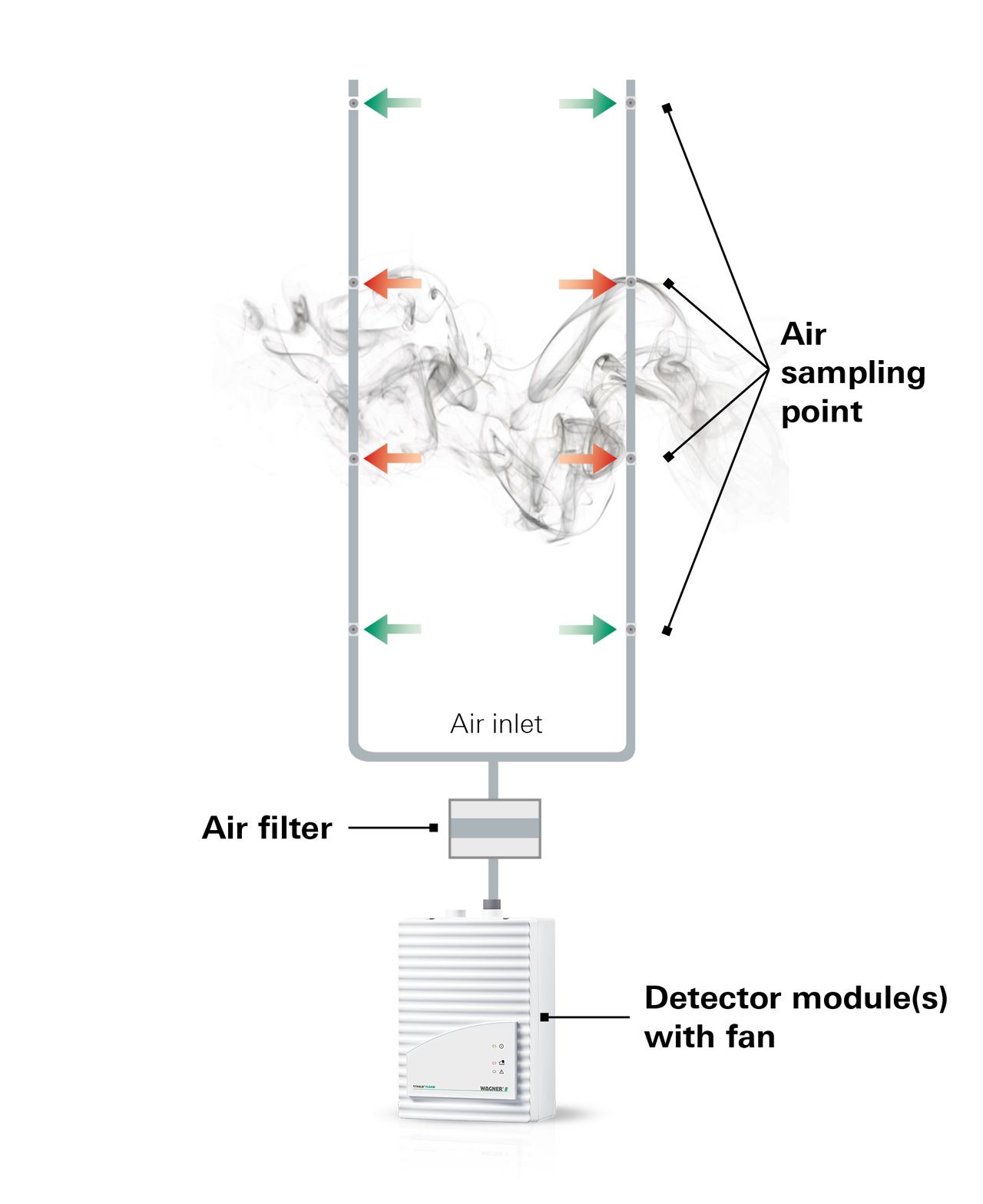TITANUS® Air Sampling Smoke Detectors - How it Works
WAGNER’s solutions for early fire detection leverage optical air sampling smoke detectors with HPLS (High Power Light Source) technology.
TITANUS® can be configured to support the needs of every individual environment. A single unit sits on a pipe system that includes air sampling points and a base unit with a detector module. The detector uses vacuum pressure to take continuous samples of the ambient air. These samples flow to a sensitive optical detector that examines them for the smallest traces of smoke particles.
To ensure accuracy and prevent false alarms, TITANUS® air sampling smoke detectors have high to very high sensitivity levels - up to 2,000 times more sensitivity than conventional point-type detectors.

Read more about how our patented LOGIC.SENS® signal processing technology prevents against false alarms below.
A fan inside the base unit generates the vacuum pressure needed to sample the air on an ongoing basis, while integrated air flow sensors continually monitor the pipe for potential blockages or breaks to ensure everything is always functioning properly.
Say goodbye to false alarms - TITANUS® is the most accurate air sampling smoke detector on the market

Filters installed between the pipe system and the detector module prevent dust from getting into the detector module and being recognized as smoke.

WAGNER’s patented LOGIC∙SENS® signal processing technology protects against false alarms by comparing the signal paths of aerosols, dust and other irritants in the air against previously learned fire patterns. An alarm is triggered only if the signal path matches a fire pattern.
Drift is a commonly known issue with conventional smoke detectors, which may cause the signal level to vary from its original value and incorrectly interpret changing background concentrations as smoke density. TITANUS® compensates for drift by ensuring that the alarm threshold automatically adjusts to changes in levels triggered by contaminated air or other background noise. As a result, the same amount of smoke is always required to trigger an alarm, ensuring uniform detection quality.

